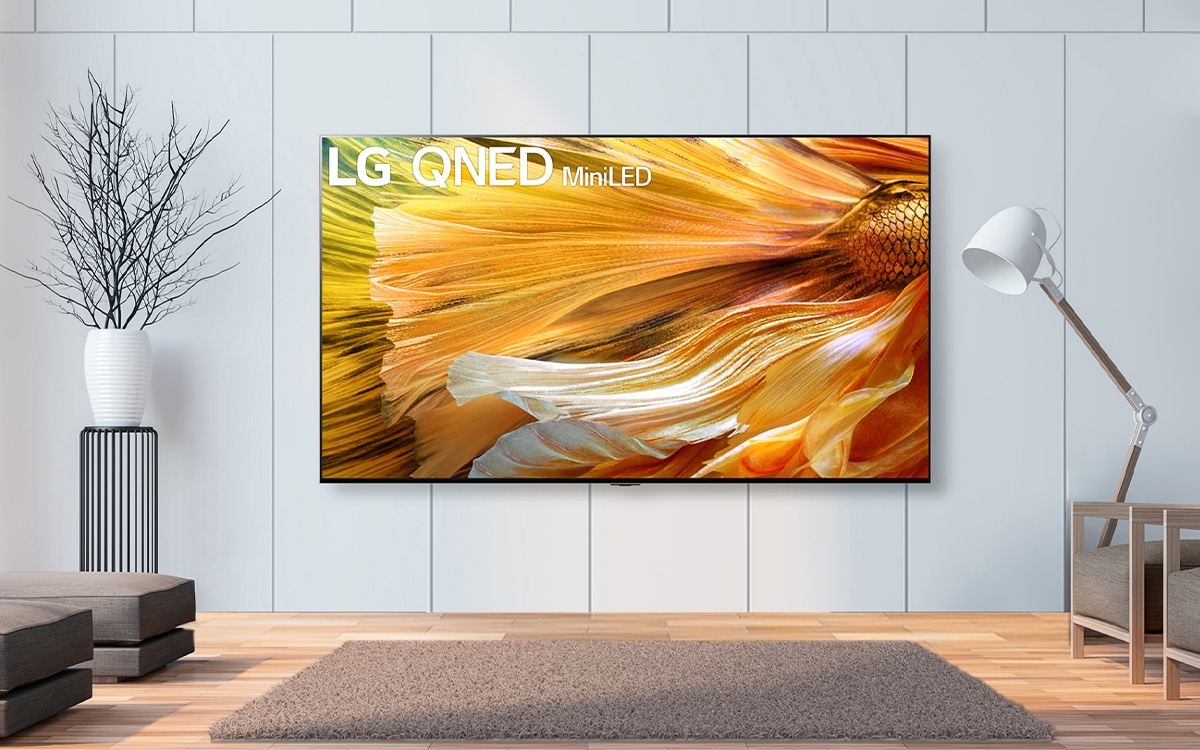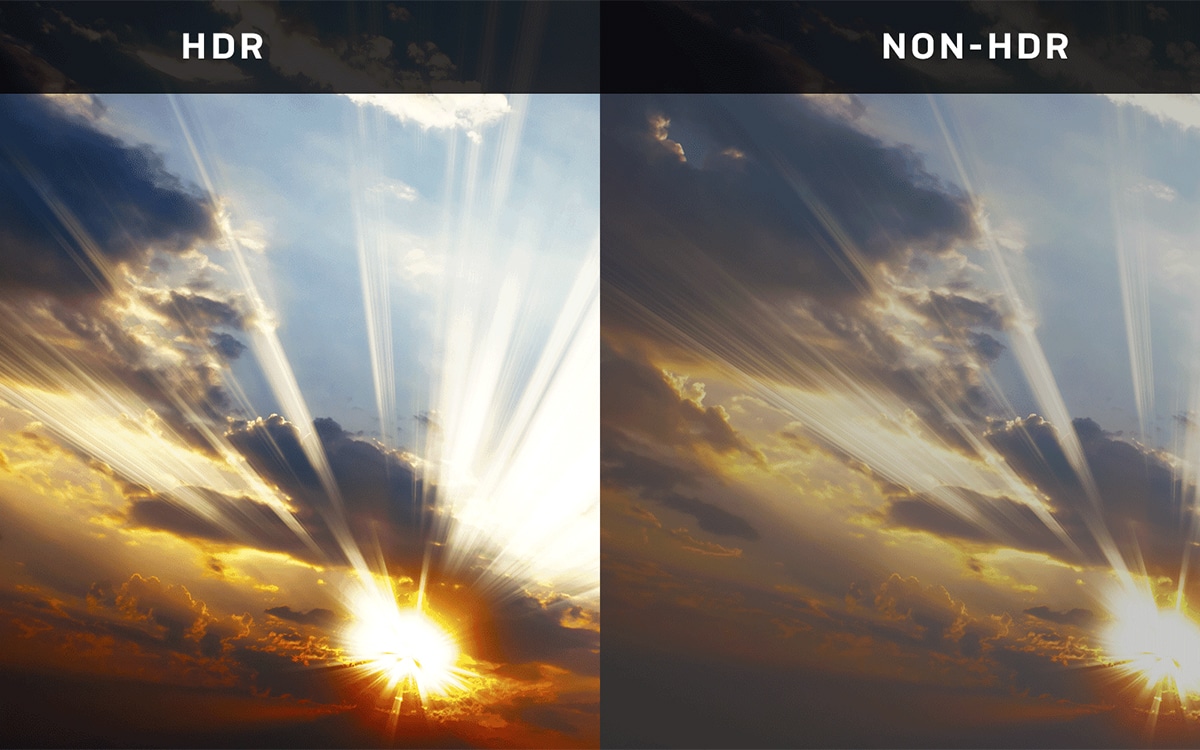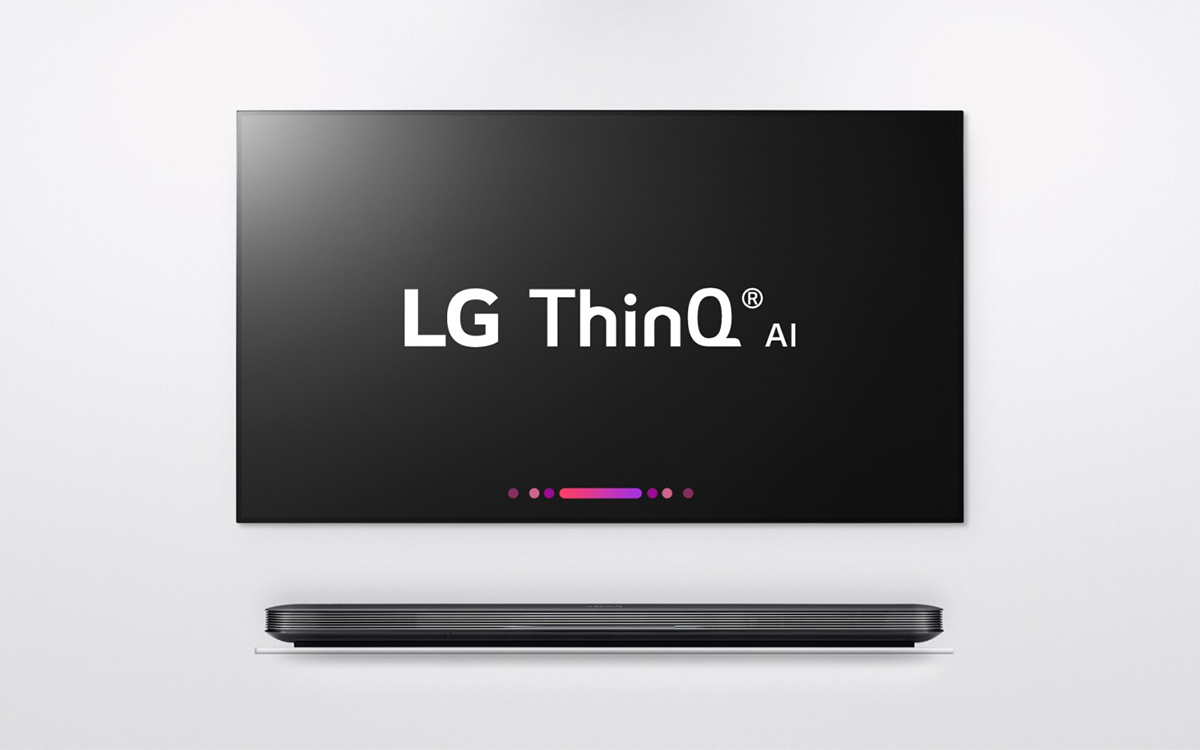The TV ecosystem is ever-evolving. When Samsung first introduced the world to the magic of their QLED TV displays, the industry was quick to take notice. Soon, every major TV manufacturer wanted a piece of the quantum dot pie!
In the pursuit of quantum dot technology to call their own, LG developed the lesser-known QNED TV. But what actually is a QNED TV? What makes it different from a QLED TV? And are they worth taking a look at? Join us down below to get all of the answers!
What Is QNED?
QNED TVs and QLED TVs actually operate in largely the same way. QNED TVs include a layer of quantum dots, mini-LED backlights, and an extra LG NanoCell layer. The extra NanoCell layer is what helps to separate a QNED TV from a QLED TV.
The NanoCell layer sits just ahead of the quantum-dot layer of the screen and acts as a light blocker. The NanoCells in this layer are specially designed to absorb any excess light that bleeds out from the quantum dot layer. This helps to create far sharper contrast and helps to reduce any distortion in colour.
QNED is a type of TV display that operates similarly to a QLED TV but differentiates itself in one key way. The inclusion of an extra LG NanoCell layer absorbs any excess light that escapes from the LED backlight.
The addition of this layer is significant when you consider how QLED TVs operate. QLED TVs operate under the same principles as standard LED TVs. Behind the main layer of the TV is an LED backlight that projects the on-screen image out to the viewer. The light from these LEDs is highly susceptible to bleed through the image on screen. This can result in black areas of an image instead appearing as a dull grey.
The QNED layer identifies light that bleeds through and absorbs it. This allows QNED TVs to achieve much sharper contrast to allow for much clearer and more eye-popping visuals. It also ensures that colours look exactly as they should.
Are QNED TVs Worth Buying?
If you’re not quite ready to put down the cash for a costly OLED TV, but you still want a screen with great clarity, then a QNED TV would be perfect! QNED TVs are very often far cheaper than their QLED or OLED counterparts. So they are great for those who want to save money in the face of rising costs.
QNED TVs are able to leverage the incredible benefits of QLED TVs, while also accounting for their associated drawbacks. The extra NanoCell layer helps to prevent light bleeding and results in much crisper images!
Thanks to their application of quantum dots, QNED TVs are able to create far richer colours. This makes QNED TVs great for film lovers who want to enjoy films as they originally looked in cinemas!
QNED TVs are great for those who want a 4K smart TV, without having to pay the hefty price for an OLED or QLED model. QNED TVs are considerably more affordable!
QNED TVs also provide much greater brightness than QLED TVs. This could make them a very attractive option for those who want to watch plenty of TV during the daytime. The higher brightness of a QNED TV helps the display to remain visible even in rooms that let in plenty of natural light. You won’t have to strain to make anything out on the screen!

Do QNED TVs Have Any Drawbacks?
Perhaps one of the biggest drawbacks holding QNED TVs from taking over the market from OLED TVs is their significantly limited viewing angles.
QNED TVs utilise backlights, just like standard LED TVs. It’s important to note that these backlights are often only able to project light at very specific angles. Viewing a QNED TV from too far to the left or right would result in a dull image. In some cases, QNED TVs can become totally impossible to watch from certain angles!
If you’re planning to use your new TV to enjoy content with a group of mates, or the whole family, you’d be better off with an OLED TV. OLED TVs offer far wider viewing angles, allowing every person in the room, regardless of where they are sitting, to have the best seat in the house.
Frequently Asked Questions
What Is QNED?
QNED Is a special type of display technology that takes the principles of a standard QLED TV but improves it with the inclusion of an LG NanoCell layer. The NanoCell layer is responsible for absorbing excess light that could ruin the contrast of a TV image. QNED TVs are also far cheaper than competing OLED or QLED TVs. Making them a very cost-effective option!
Is QNED The Same As Mini LED?
While a QNED TV is not the same as a mini LED TV, it’s worth noting that QNED TVs make use of mini LEDs as a backlight solution! The smaller size of mini LEDs means it’s easier to squeeze more of them into the backlight of the screen. This means that a QNED TV is able to make use of distinct light zones to create greater contrast.
Is QNED TV Good For Gaming?
While OLED TVs are amongst some of the best displays for avid gamers, QNED screens are also able to offer a fantastic visual experience. Their high resolution and contrast help make digital worlds feel all the more real. They also boast very low input lag and high refresh rates. QNED TVs offer gamers an extra sense of control over their games!
What Is The Difference Between QNED And OLED TV?
QNED TVs make use of backlights to project an image from the screen. OLED TVs, on the other hand, have no backlights at all! Instead, the pixels that make up the screen of an OLED TV are all self-illuminating. This means that they can be turned off when needed to create true black values and infinite contrast!





